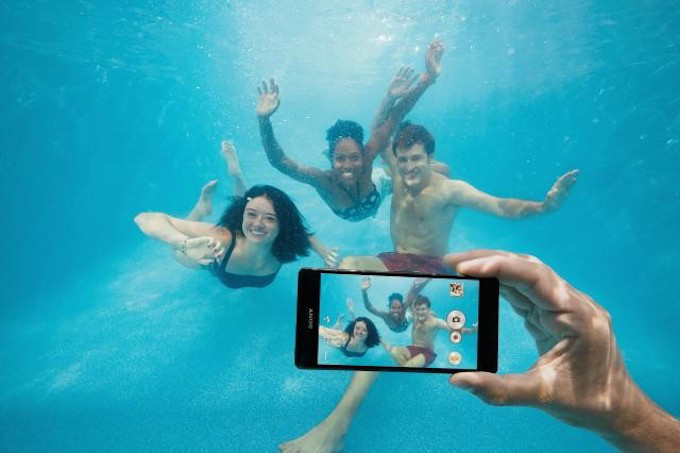Sony: You Actually Shouldn’t Use Waterproof Xperia Phones Underwater
Despite the fact that Sony’s most recent phone, the Xperia Z5, comes with an Ingress Protection rating of IP68 — the highest possible in dust and water protection — and the marketing lengths Sony went to when bragging about all the awesome photos and videos you could take in the pool with its devices, the company has a few new statements on its site that contradict all of that, points out Xperia Blog.
Included on the page for water and dust protection: “Remember not to use the device underwater” and “The IP rating of your device was achieved in laboratory conditions in standby mode, so you should not use the device underwater, such as taking pictures.”
Laboratory conditions are a lot different than someone jumping into a pool, swimming around like a speedy little tadpole and generally moving the camera around a bunch. To that end, Sony’s updated support page notes that the devices are tested “gently” for their waterproof abilities. They also aren’t whipping them around underwater, a Sony mobile support rep explained.
“Moving or operating the device while it is submerged is not tested during the laboratory tests,” the comment reads. “There are also many environmental factors which we could not assess (e.g. water movement or water pressure changes during the movement), if a device is used underwater. Therefore we recommend not submerge our Xperia Z5 in water.”
Xperia Blog notes that the disclaimers were first spotted for the Xperia Z3+/Z4 in May, but they thought it was just something related to those handsets. When the statements appeared with the launch of the Z5, that’s when people started to notice Sony was trying to reset the phone’s waterproof limits.
It’s potentially confusing for customers, what with the hooplah surrounding Sony’s marketing of its flagship phones (up until the Xperia Z3+/Z4, at least). Many of those promotions included a slew of photos of the phones having all kinds of fun underwater. For example: a commercial for the Z3 showed someone diving into the pool and then taking a picture underwater.
The change of tune could be tied to the cost of repairing phones that fail underwater while they’re under warranty — if users have plugged all ports and memory card slots, etc. in the phones before submerging them and they’re damaged, Sony could be on the hook to fix them.
Xperia points to conflicting language on Sony’s site that remains despite the updated support page for the phones, including the product page for the Z3, which reads: “You can even dive down to 1.5 metres with it.”
The Z5 product page has the new disclaimer, however: “You should not put the device completely underwater or expose it to seawater, salt water, chlorinated water or liquids such as drinks. Abuse and improper use of device will invalidate warranty.”
The support page also has a list of which water-related activities its devices can handle. Acceptable? Spilling water on the device, using it with wet fingers, getting caught in the rain, having water splash on it in the tub. Not acceptable? Dunking it in that tub, or, again, going underwater with it.
This doesn’t mean your phone will definitely be busted with a dip in the pool, but Sony doesn’t want to take the chance that it will, so it’s covering its butt.
So how can Sony claim an IP score of IP68 — the best possible for a device — for the the Z5? First you’ve got to understand what the numbers mean: the 6 means it has the highest dust protection rating (“Dust tight.”), and the 8 corresponds to its waterproofness (“Protected against the effects of continued immersion in water at depths greater than 1 metre. The exact conditions are specified for each device by the manufacturer.”).
In this case, it seems Sony is — very carefully — defending its claim to that 8, by noting that the device is protected against continued immersion, but only when it’s tenderly placed in a lab container and oh-so-gently lowered to that depth.
Sony changes stance on waterproof phones: Do not use underwater [Xperia Blog]
Want more consumer news? Visit our parent organization, Consumer Reports, for the latest on scams, recalls, and other consumer issues.


